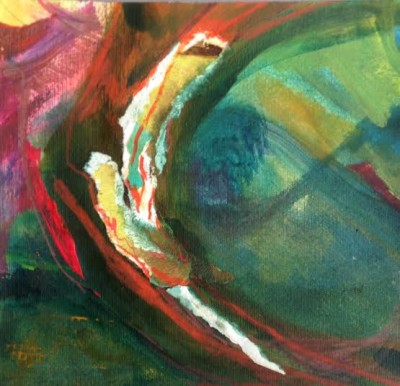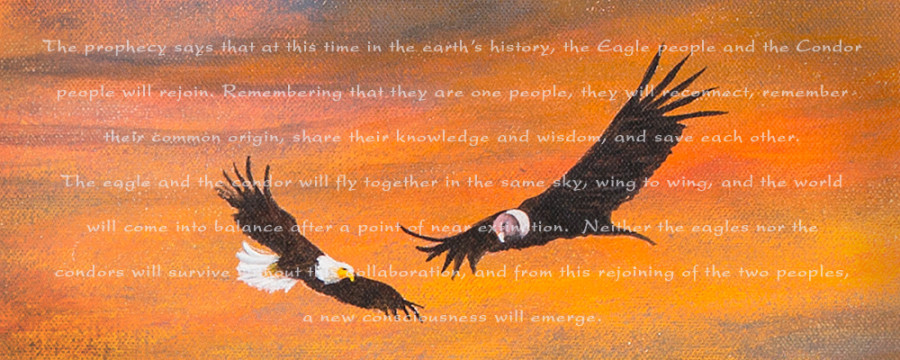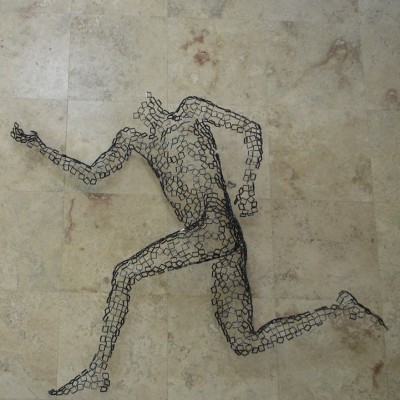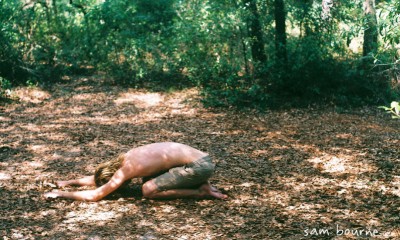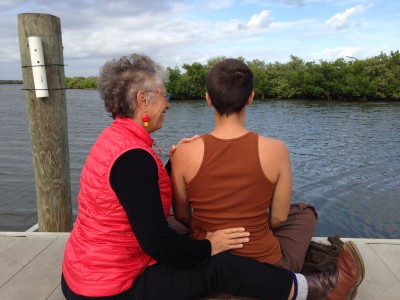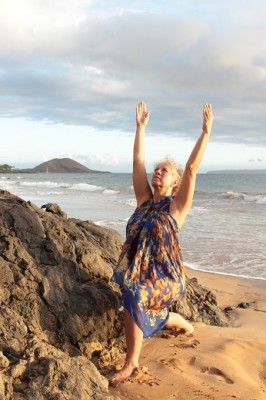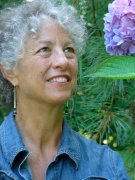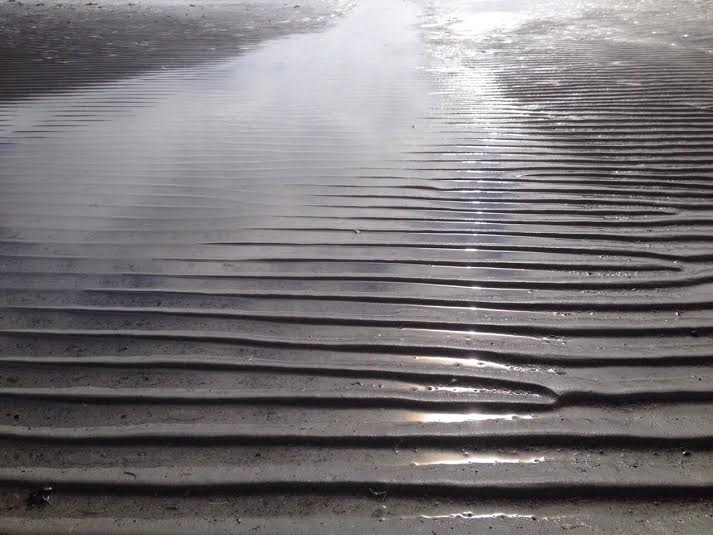 Transitions are inevitable in our lives. We face them from the time we are in the womb. In fact, my teacher Marion Woodman says the way we come out of the womb and through the birth canal can influence us for years during transitions — whether it’s our first day of kindergarten or how we face a new work challenge.
Transitions are inevitable in our lives. We face them from the time we are in the womb. In fact, my teacher Marion Woodman says the way we come out of the womb and through the birth canal can influence us for years during transitions — whether it’s our first day of kindergarten or how we face a new work challenge.
If you were drugged as you went through the birth canal, for example, you might be drawn to drink or take drugs as a way of coping. If the doctor used forceps, you might look for someone to pull you out of tough situations. How we experience transitions may indeed reflect our birth experience. Think about your transitions and see whether or not, this concept resonates for you.
Recently I’ve been helping women with transitions by acting as a doula, traditionally a name for a childbirth coach who helps in all stages of labor and delivery. But my work involves helping women move through other kinds of transitions. One friend is going through a divorce; another is contemplating leaving her business; and a third has been facing very serious illness and confronting her death.
I call this transition work “breath by breath.” It’s a way of understanding that we need not replicate old patterns, whether those patterns were based on our birth or how we were acculturated. We have aids to help us through — practices to smooth our way through life’s transitions. I also think of this work as not just mine but the work of the Divine Doula, because I believe in the divine feminine. I believe in the energetic process of sitting at the table of unknowing — allowing ourselves to let what needs to emerge, emerge; allowing ourselves to be beginners and come to each breath knowing that we don’t know where the next one will take us.
Just as a doula, during childbirth, keeps a woman focused on her breathing and on the here and now, my work too encourages women to take life breath by breath. This kind of coaching does not only focus on the head or the mind, but instead emphasizes our whole being, our body-mind, and present-moment awareness. Your body is the heart of your story. It connects you to the emotional and mental patterning that needs to come undone for you to move forward.
This work allows us to own our own breath and make our own choices, and it challenges us to stay present — not with where we want to be in ten years or two days but with where we are now. And the more I work as a doula, the more I see that like giving birth to our children, we are giving birth to ourselves.
But, as with childbirth, transitions can be scary. That’s true even with small transitions. A transition is a kind of death, and when there’s a death, there’s loss. There’s a grieving for what never was. There’s fear for what might lie ahead.
All these emotions live in our bodies, and are held in our tissue.
I’m noticing with a number of my friends that the challenge in a transition is not the “birth” process itself — the challenge is putting ourselves at the center of our story. The challenge is that we are so addicted to the care-taking of others that we’re always certain we know what’s good for everybody else and have very, very little idea of how to nurture, nourish, and care for ourselves. Often, what keeps us breathless is that we feel we have to do everything ourselves.
We may also feel breathless from holding on to our identity. Transitions can shift our identity, when we move to a new job or new location or from one phase of schooling to the next. We identify ourselves in a certain way, and being busy, overwhelmed, and breathless is often part of the identity. We fall into old habits, including the habit of breathlessness.
And so as I work with women as a doula, I’m asking them to focus on the breath and to recognize that as they go through each of these transitions, big or small, the same tools, the same practices, are needed.
The first step is agreeing to be your own best friend, and to recognize that it’s time to put yourself at the center of your story — which for many women is such a radical idea that they can’t even recognize what life would look like. Often, our habit of taking care of other people arose from decisions we made as children, so that we would get taken care of. Perhaps the adults around us weren’t able to care for us — and we thought, logically, that if we took care of others, we would get cared for as well, and that often is not the case.
The next piece is to focus on the body, and to acknowledge that to be in the moment means to sit with what is, now. Every mindfulness practice is an opportunity to recognize that whatever feelings you’re having at the moment are simply feelings that will pass. They can be great feelings, and they can be terrible feelings. They can be exhilarating or they can be depressing. You can be in despair or you can be in jubilation. But momentary feeling is not a static reality. You will not feel like this forever.
Feelings can derail you, take you off track as you go through your stages of change. So, it’s important to recognize that whatever you’re feeling is a feeling — that coming back to the breath, settling down, feeling your body, expanding in to your physical self, and coming back into your sitz-bones, into your center, coming down into your ground, is what is stable. Not the passing story that your mind is trying to tell you that day.
This work of dealing with transitions is best done with a partner, a doula. I really, truly believe we all need doulas, and I do believe that what will really make a difference for every one of us is to find one or two people in our lives, and not necessarily our life partner, who can help us have some clarity, help us see more spaciously.
My suggestion is that we practice first of all asking for help — letting people know when we’re overwhelmed or challenged by a situation. And if you’re guided by a spiritual practice, ask for help from something greater than yourself, the Divine Doula inside. I like to think of it as some kind of universal principle of goodness that’s holding us. And I like to believe that I’m being carried by some great feminine energy. Sometimes I can picture it and sometimes I can’t. Most of the time it’s just a sense of being enveloped. Because many of us believe we’re in charge of everything, we still get tripped up and think we have to go it alone, even when we have a deep connection to the Divine.
So when we begin to understand that we are truly not alone, and that there are things that are bigger than us, and we start asking ourselves, “What is it that I actually want in this moment?”, without worrying about what it’s going to do for everybody else, we’re actually honoring the deep feminine. When we take that radical step of choosing on behalf of ourselves, we’re honoring the deep feminine.
That feminine energy will show up in many ways, depending on where you are in your life and what issues you’re facing. With my friend who’s working through her divorce, it’s hard for her to remember that her divorce is not just about her ex-husband or not just about her children. It’s about her, too. It’s so hard to remember, when we are going through a divorce — particularly if there has been a long marriage — to give up the pattern that we all know is codependency, but has served us for many years, and might have been birthed with our early childhood experience.
For my friend who has been facing serious illness, how does she open herself to each day and find a way to deal with the mind that wants to trip her up and often presents her with the worst-case scenario, instead of seeing what’s so amazingly beautiful around her. Every time we come back to that, it’s as if it’s a new moment.
And for my friend who is going through a big work challenge — for whom work has always been her identity, her North Star, the thing that tells her who she is — what does it look like to rely on something else as a way of knowing herself?
Many of us who are entering Cronedom have shifted out of our personas as workers, queen bees, the one holding the house up, and we’re finding, actually, there is someone there after the job is done — the job of raising our children or of keeping our boss’s job afloat with our creativity and ingenuity.
I’m meeting remarkable women today who are doing pottery or painting, or spending their days learning more about nature, something they always wanted to do. And sure enough, they have vibrant identities beyond the roles they once felt defined them.
So, I want to invite you to imagine who are you as you go through the transitions you are facing. What does it look like if you actually put yourself in the center of the story, and treat yourself as your own best friend? What does it look like if you know, deep in the soul of your being, that you were put on this Earth to be and not just to do? The practices that will help you need not be complex: Your breathing practice can be as simple as stopping and simply counting to six on the exhale and counting to three on the inhale. It can be as simple as humming a song that you love or singing loudly and with joy while you’re driving in traffic. The breath that gives us life will guide you from where you are to where you want to be.




